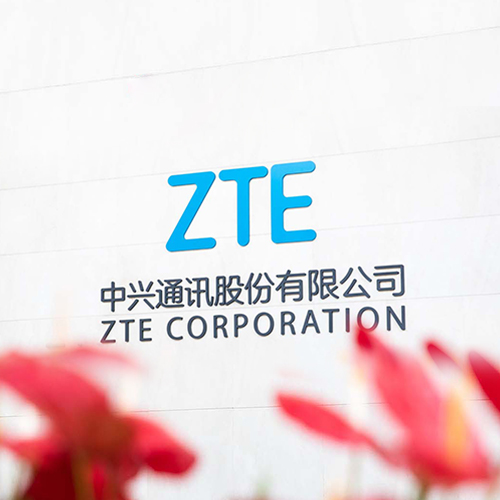20 March 2017, Shenzhen, China – ZTE Corporation (0763.HK / 000063.SZ), a major international provider of telecommunications, enterprise and consumer technology solutions for the Mobile Internet, today announced the overseas debut of a shared and co-built carrier-class IoT solution in conjunction with the China LoRa Application Alliance (CLAA) at the CeBIT Global Event for Digital Business, held from March 20 to March 24, 2017 in Hannover.
ZTE and leading IoT enterprises from the CLAA showcased an industrial grade IoT gateway and cloud-based core network, long range/low power (LoRa) chips/modules, rich intelligent IoT terminals and mature solutions together with 3D dynamic joint service demonstrations, displaying ZTE's end-to-end solution delivery capabilities in the urban IoT field, and meeting the requirements of last-kilometer access for low power consumption, low costs and long-distance deep coverage.
Since its foundation at the end of January 2016, the ZTE-initiated CLAA, a dominant player in China's carrier-class LoRa industrial chain, has developed into an alliance with over 500 members, displaying exceptionally fast growth. Its members include not only network enterprises which manufacture chips, devices, platforms, antennas and batteries, but also a large number of application vendors around the world with many years intelligentisation experience in the metering, industry park, municipal administration, industry, energy and agriculture fields, which can boost the LoRa industry through many applications. The CLAA has built a technology exchange platform, solution verification platform, market cooperation platform, resource interconnection platform and innovation incubation platform for Chinese LoRa applications. It has certified over 80 products from enterprises in the alliance, released more than 50 application types and launched 30 demonstrative bases for CLAA IoT applications, greatly enriching the application types in the Low-Power Wide Area Network (LPWAN) area. Carrier-class LPWAN networks and applications have been put into large-scale commercial use in the CLAA ecosphere.
In addition to its deployments in the industrial chain ecosphere, ZTE is testing a new business and cooperation model in the LPWAN area, the CLAA network operates in an open, close-looped, shared and co-built way, and all CLAA members are builders, operators, users and application developers of the network. The CLAA has a unified and standard LoRa gateway, which enables standard hardware from different types of vendors to access a network and be shared. With the strength of the software and algorithm for the cloud-based core network platform, network resources can be shared among users. ZTE provides professional extensive operation and maintenance (O&M) services and integrates a large number of scattered small and medium-sized LPWAN entity operators so that they can benefit from large-scale network operation capabilities through sharing and co-building.
Based on unauthorised frequency bands, light-weight networks, black-box IoT terminals, a security architecture integrating a bearer and applications, as well as an independent cloud-based application concept, the shared and co-built CLAA carrier-class IoT solution proposed by ZTE featuring "self-supplied energy, cloud, a pipe, and terminals" can implement quick and flexible wide area network (WAN) IoT deployment with low power consumption, meeting customers' requirements for dedicated IoT networks. ZTE has explored the public utility sector extensively, including gas and water utilities and vertical industry such as digital oil fields, smart industry park and smart buildings. ZTE has carried out trial operations in many cities, and has now entered the phase of large-scale commercial use of IoT. In the gas -field, ZTE and a number of leading large Chinese gas groups are cooperating and participating extensively in the formulation of industrial standards. More than 30 smart meter enterprises have joined the alliance and support the CLAA agreement, and over 80 percent of mainstream gas meter enterprises are formal members of the CLAA. For digital oil fields, ZTE and a number of enterprises in the alliance jointly launched a LoRa technology–based production monitoring system, which can implement remote intelligent data collection and control. Compared with traditional models, this system has slashed the comprehensive construction cost and has been demonstrated in a large oil field deployment.
In addition to the overall solution for carrier-class CLAA networks, ZTE also offers customers a general-purpose CLAA IoT service generation platform derived from an extension of the professional supervisory control and data acquisition (SCADA) platform, which can rapidly meet the requirement for fragmented industry park monitoring in configuration mode and sharply reduce application development costs. The platform monitors the device operation status and workflow status on a campus in real time and provides parameter analysis, device lifespan management, linkage functions, customised functions and other advanced application functions, raising the industry park information level and energy utilisation efficiency, and forming large-scale copy in communities, schools, hospitals, factories, mines, agriculture, forestry and water conservation projects. For the energy Internet, ZTE and its partners have developed multiple models of CLAA IoT–based smart power sensors for innovative energy applications, and started deploying demonstrative energy and power IoT application bases in first-tier Chinese cities.
As the designer of a top-level IoT solution and the leading builder of a smart city application platform, ZTE is building an IoT ecosphere and deploying applications in many different industry smart city scenarios. Through the creative, shared and co-built IoT model that features one network, multiple platforms and multiple services ZTE helps to promote the prosperity of the IoT industry. With the ideas of openness and win-win cooperation, ZTE and upstream and downstream IoT enterprises will jointly promote large-scale commercial deployment of carrier-class urban LPWAN IoT that can develop sustainably and push forward intelligent transformation for cities and digital transformation for industries.
